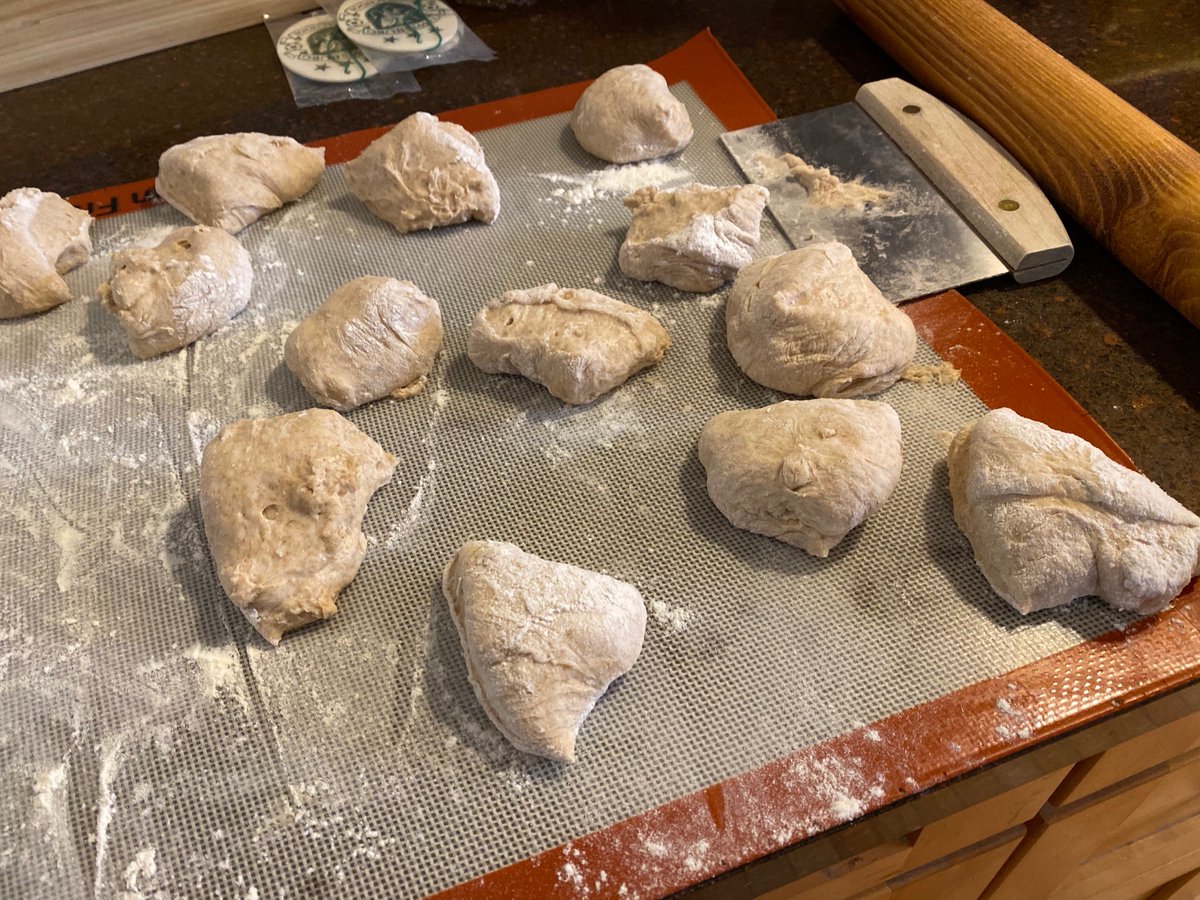
Ok! I’ve been asked by @johndavidian to do a #PiDay tweet-storm on Key Lime pie and how it thickens without cooking! Strap in, #FoodSci ahead! Heads up, I'm about to disagree with Wikipedia en.wikipedia.org/wiki/Key_lime_… 1/29
Here’s a recipe. Something fun about key lime pie is that it’s kinda new, as the history of pie goes - it’s missing from my collection of midcentury cookbooks (this is Doubleday) 2/29 

The interesting thing about the recipe is that we are not using heat to set the filling. This is no-cook. YET we add 3 liquids together to make the filling (four if you count the food coloring). What? 3/29
Well, we have two possibilities for how these liquids come together to be a semi-solid pie. #FoodSci battle coming right up! 4/29
One possibility - key lime pie is essentially *cheese*! 5/29
Yes, cheese. You can make a homemade cheese by adding an acid (say, lime juice) to milk. Go whip up a batch of paneer to prove this to yourself. I’ll wait! foodnetwork.com/recipes/aarti-… 6/29
This works because the acid from the lemon juice causes the protein in the milk to denature - go from it’s functional structure to a big floppy mess 7/29 

And the big floppy mess tangles (imagine spaghetti) and these tangles are too big to stay floating in the water and drop out as cheese curds (leaving watery whey behind) 8/29
The sweetened condensed milk has about 30g of protein to it, out of a ~400g can. It’s also got 220g of sugars(!), which is why its viscosity is so high (fast definition: why it flows so much more slowly than milk milk). 9/29 

By contrast, 400g of regular milk has (let’s do some scaling!) 15g of protein and 20g of sugars. So by “condensing” the milk, they remove half the water, and add 180g of sugar! 10/29 

Anyhow - we’ve got a lot of protein here. We’re also adding 4 egg yolks. What’s that bring to the party? Well, it’s interesting fdc.nal.usda.gov/fdc-app.html#/… 11/29
The yolks bring in a pile of protein and fat. And that’s lovely - 64g of protein in this case. And the fat is yummy. But it also brings something essential and fun to the party - emulsifiers! 12/29
Which brings us to possibility #2 - key lime is essentially *mayonnaise*! Huh????? 13/29
Emulsifiers are chemicals that walk in two worlds - they’re comfortable in water and in oil and most comfortable (for the thermo fans in the audience, minimum G) when they’re right on the border between the two. 14/29 

The emulsifier in egg yolk is from the chemical family “lecithin” and is known specifically as choline en.wikipedia.org/wiki/Choline 15/29
Why is this exciting? Well, we have a whole lotta fat here, which is an oil AND a whole lotta water. Summing up over all ingredients, we’re looking at 134g of fat and 324g of water that will float apart if allowed to do so. 16/29
BUT if you add an emulsifier, and mix, you get (in this case) the drops of fat separated and more-or-less stability floating in the sea of water. Thanks, lecithin! 17/29 

AND this leads to another exciting property of an emulsion. Let’s imagine fluid that’s flowing, down on the micro-level. Pure fluids flow, as you push on them, according to their own viscosity. gfycat.com/paleactualcatt… 18/29
Something really interesting happens with an emulsion though. The oil would flow if it were continuous but as it’s in stable little drops that, from a flow perspective, may as well be tiny rocks 19/29
i.imgur.com/7YgoA2F.mp4
i.imgur.com/7YgoA2F.mp4
Think about how well mud flows - not the same as water! It’s goopy. In fact, it can go all the way to semi-solid with the right mix. 20/29
But let’s go culinary here - turns out there’s another fun thing you can do with fat and egg yolks. You can make mayonnaise (again, from Doubleday) 21/29 
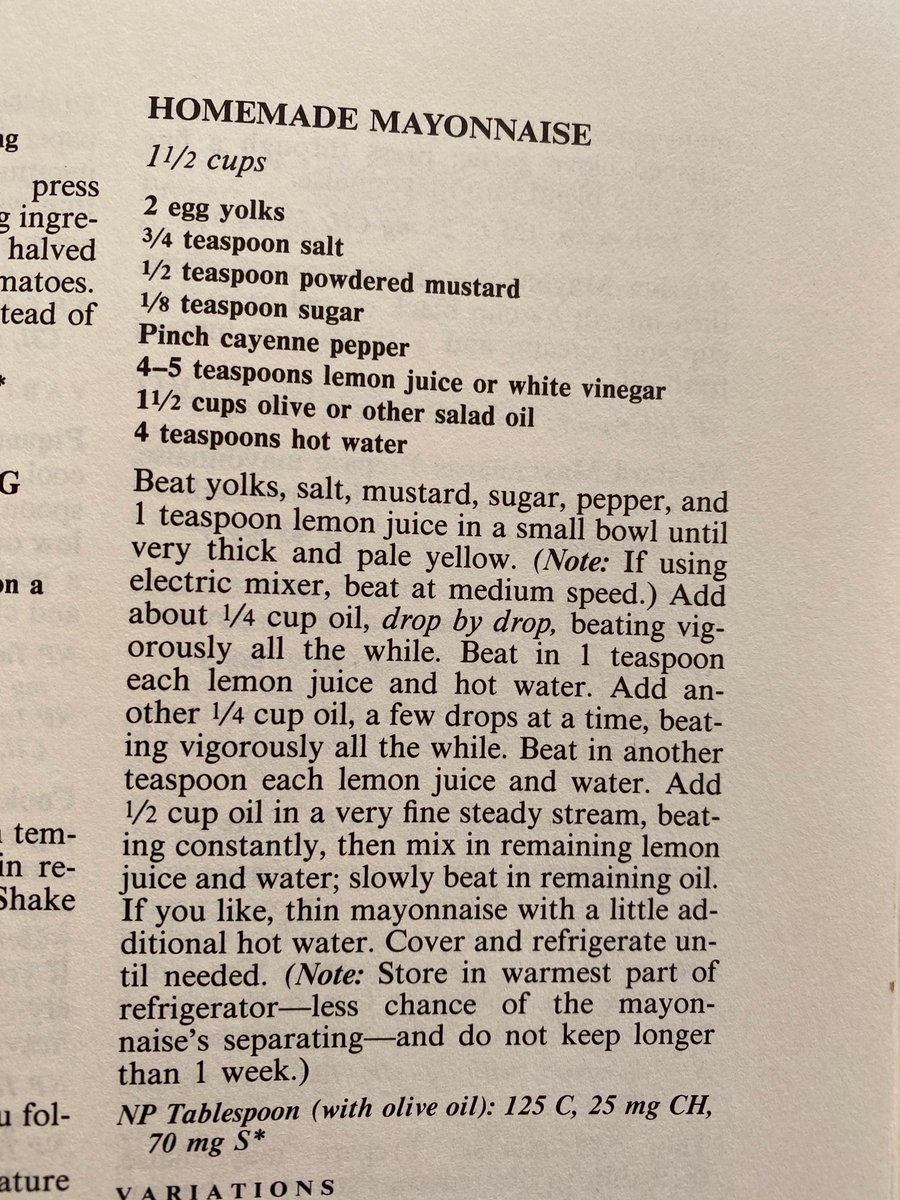
You’ll note - again, this is four liquids - egg yolks, lemon juice, oil, and water. Yet the results are reasonably semi-solid. 22/29 

The acid in this case is changing the ionic environment for the oil droplets, enhancing their ability to bounce off of each other (because like-repels-like, charge-wise) 23/29 
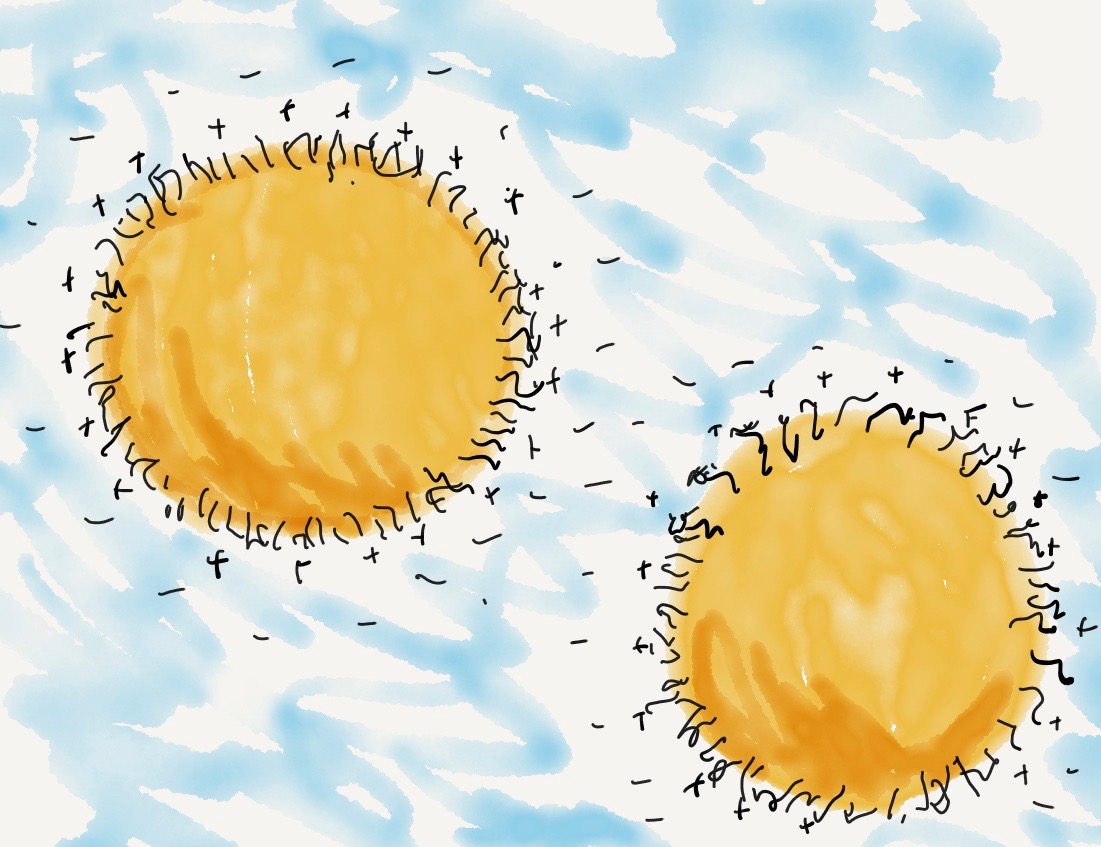
23a Thermo fans: you'll note in the preceding image I broke out DLVO theory to create an anion double layer around the presumptively + charged choline. Haven't personally checked the pKa on this, so if you have some values, would appreciate knowing which charge is more correct
SO - is key lime pie cheese? or mayonnaise? Let’s weigh the evidence 24/29
Pro cheese: We are using a LOT of acid, relative to the mayonnaise recipe. We are likely to be denaturing protein, at least a little bit. I unfortunately can’t get at my pH meter just now, but I suspect we are well within the denaturation pH range for milk protein. 25/ 29
Pro mayonnaise: Aside from the acid amounts, the rest of the proportions are very much like mayo. And the pie lacks the curdy-gritty-texture that cheeses have. 26/29
Finally - paneer and its brethren become semi-solid at room temperature, while mayonnaise’s behavior is a bit more temperature dependent. Going back to key lime, it really only sets up in the fridge…….. 27/ 29 
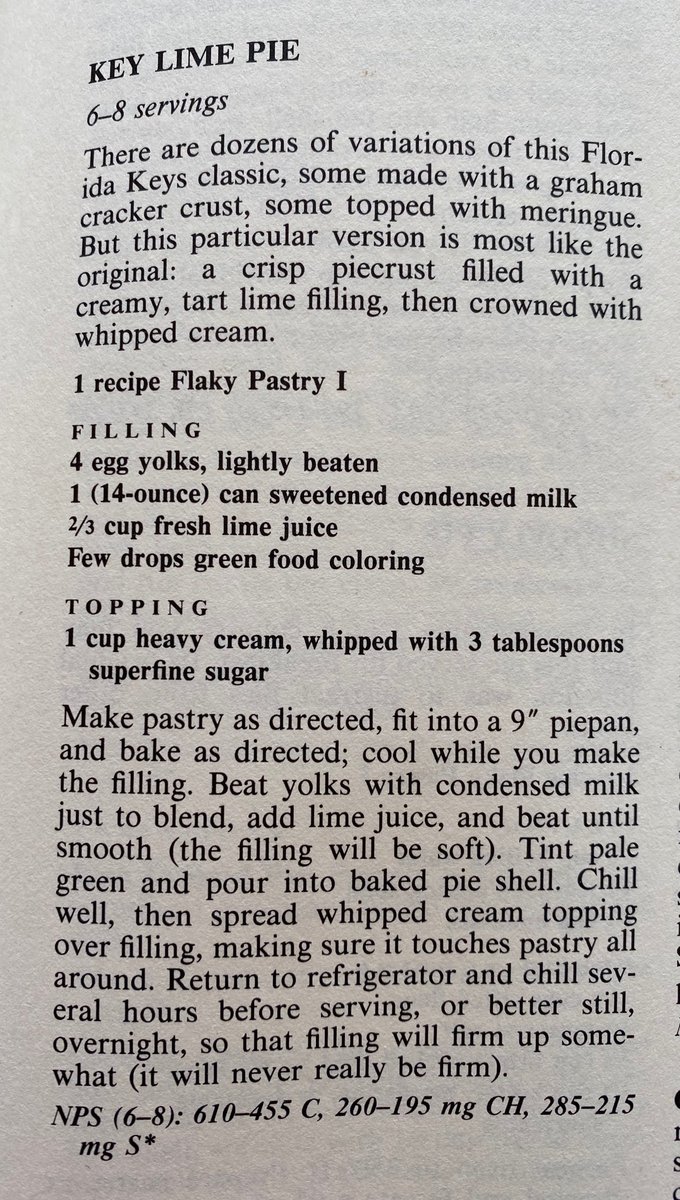
My guess is, key lime pie is really a mix - some protein denaturation drives the water-phase viscosity up, enhancing an effect that is mostly an emulsion. #FoodSci 28/29 

Enjoy your #PIDay y’all! It’s a great day to maintain social distance by making and eating your own pie. Which I am now gonna do! 29/29 
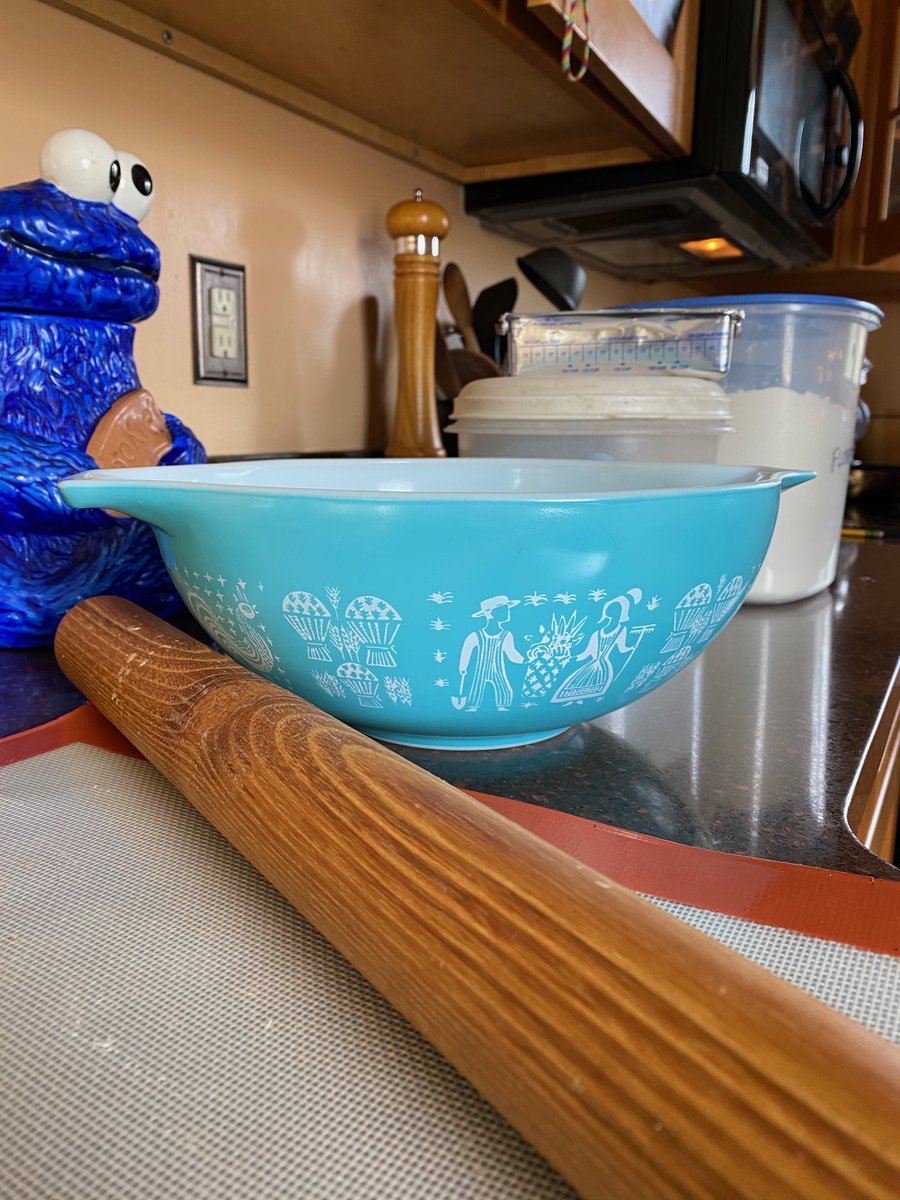
PS - Want some other mostly-emulsion foods? Good Eats episode on Chocolate Mousse is a classic of the genre which I used to use in class all the time: foodnetwork.com/shows/good-eat…
@threadreaderapp unroll if you would!
• • •
Missing some Tweet in this thread? You can try to
force a refresh


